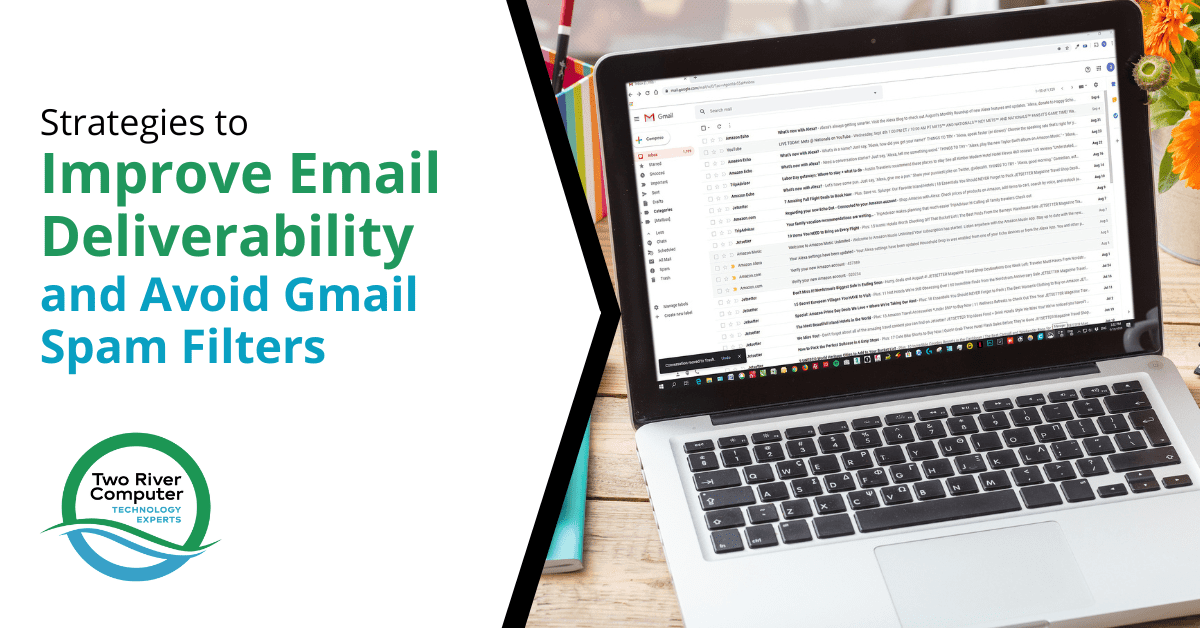
In the digital era, email remains a vital channel for communication, both personally and professionally. However, it can be disheartening when your well-crafted emails fail to reach their intended recipients or end up trapped in the dreaded spam folder.
This article will focus on a specific challenge faced by email senders: the issue of emails not delivering or being marked as spam when sent to Gmail users.
Understanding Gmail’s Commitment to Minimizing Spam
As one of the leading email service providers, Gmail employs robust measures to combat the pervasive problem of spam emails. While these measures protect Gmail users, they can pose challenges for legitimate senders whose emails are mistakenly identified as spam.
To ensure your emails consistently land in the recipients’ inbox, it is crucial to comprehend the factors that contribute to Gmail’s spam detection system.
The Significance of DNS Changes: DKIM, DMARC, and SPF
A pivotal aspect that significantly influences email deliverability is the domain’s DNS (Domain Name System) configuration. For businesses with their own .com domain, making specific DNS changes to authenticate emails is essential.
These changes commonly involve implementing DKIM (DomainKeys Identified Mail), DMARC (Domain-based Message Authentication, Reporting, and Conformance), and SPF (Sender Policy Framework) records. Let’s discuss each of these authentication mechanisms:
DKIM (DomainKeys Identified Mail)
DKIM serves as an email authentication method that allows the recipient’s mail server to verify the legitimacy of an email message. By digitally signing outgoing messages, the receiving server can verify that the email originated from the claimed sender and has not been tampered with during transit.
Implementing DKIM involves generating a cryptographic key pair and publishing the public key in your DNS records. This robust verification mechanism significantly enhances email deliverability and helps bypass Gmail’s spam filters.
DMARC (Domain-based Message Authentication, Reporting, and Conformance)
Building upon the authentication provided by DKIM and SPF, DMARC empowers senders to specify email authentication policies and provides instructions to receiving mail servers on how to handle messages that fail authentication. By publishing a DMARC record in your DNS, you can instruct Gmail and other receiving servers on how to treat emails that do not pass authentication, reducing the likelihood of your legitimate emails being marked as spam.
SPF (Sender Policy Framework)
SPF plays a vital role in verifying the legitimacy of email senders. By specifying the authorized email servers for a particular domain, SPF enables receiving servers to check if an email originates from an approved source.
This crucial mechanism helps prevent email spoofing and fortifies the overall email authentication process. Configuring SPF records correctly is imperative to increase the chances of your emails reaching Gmail users’ inboxes.
What are Best Practices for Improving Gmail Email Deliverability?
Aside from DNS changes, several other best practices can enhance your email deliverability when sending to Gmail users. Consider the following strategies:
Build a Strong Sender Reputation
Maintaining a positive sender reputation is critical for successful email deliverability. Focus on building a reputation by sending relevant and engaging content to engaged recipients. Avoid practices such as purchasing email lists or engaging in spammy tactics, as they can severely harm your reputation and lead to email blocking or filtering.
Segment Your Email List and Personalize Content
Segmenting your email list allows you to target specific groups of recipients with tailored content, resulting in higher engagement and improved deliverability. By personalizing your emails based on recipient preferences, demographics, or past interactions, you can increase relevance and avoid triggering spam filters. Utilize recipient data effectively to create meaningful connections and foster trust with your Gmail audience.
Monitor Email Engagement Metrics
Keeping a close eye on email engagement metrics provides valuable insights into the success of your campaigns and can help identify potential deliverability issues. Track metrics such as open rates, click-through rates, and spam complaints to gauge the effectiveness of your emails.
Low engagement rates may indicate that your emails are not reaching recipients’ inboxes or are being flagged as spam. Make necessary adjustments to your strategies based on these metrics to optimize deliverability.
Maintain a Clean Email List
Regularly cleaning your email list is essential for maintaining a healthy sender reputation. Remove inactive or bouncing email addresses from your list to improve deliverability rates.
Sending emails to invalid or non-existent addresses can trigger spam filters and harm your sender reputation. Implement a robust email verification process and periodically prune your list to ensure it remains up to date and engaged.
Test and Optimize Email Templates
Testing different email templates can help identify elements that may trigger spam filters. Experiment with various subject lines, email structures, and calls to action to determine what resonates best with your Gmail recipients.
A/B testing can provide valuable insights into what drives engagement and improves deliverability. Continuously optimize your email templates based on testing results to maximize success.
Seeking Professional Guidance: Partnering with Deliverability Experts
Navigating the intricacies of email deliverability, DNS changes, and maintaining a strong sender reputation can be complex and time-consuming. If you find yourself struggling to overcome Gmail’s spam filters and optimize email deliverability, seeking professional guidance is a viable solution.
Partnering with experts in email deliverability and DNS management can provide invaluable support and ensure that your emails are properly authenticated and configured to achieve maximum deliverability.
At Two River Computer, we specialize in helping businesses overcome email deliverability challenges. Our experienced team of professionals understands the intricacies of Gmail’s spam filters and the necessary DNS changes to enhance deliverability. Whether you need assistance with implementing DKIM, DMARC, SPF records, or optimizing your email campaigns, we are here to provide expert guidance and support.
Contact us today to optimize your email deliverability and overcome Gmail’s spam filters!


